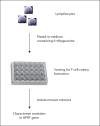Measuring genome instability in aging - a mini-review
- PMID: 22156741
- PMCID: PMC3696364
- DOI: 10.1159/000334368
Measuring genome instability in aging - a mini-review
Abstract
Background: There is mounting evidence for an age-dependent accumulation of somatic mutations as a result of the inherent imperfection of DNA replication and repair. A possible age-related decline in genome maintenance systems may exacerbate this age-related loss of genome integrity. A review of the current methods of mutation detection is timely in view of the lack of insight as to the magnitude of somatic mutation accumulation, the types of mutations that accumulate, and their functional consequences.
Objective: In this paper we review the current methods for measuring genome instability in organisms during aging or in relation to life span.
Methods: The review is based on established and novel concepts from the existing literature, with some examples from our own laboratory.
Results: Studies using cytogenetic assays and endogenous or transgenic mutation reporter assays provide strong evidence for age-related increases of different types of mutations in animals and humans during aging. This increase in DNA mutations is tissue-specific and also differs between species.
Conclusion: Today, our knowledge of somatic mutation profiles in aging is mainly derived from cytogenetics and the use of endogenous and transgenic mutation reporter assays. The emergence of new approaches, most notably massively parallel sequencing, will give us deeper insight into the nature of spontaneous genome instability and its possible causal relationship to aging and age-related disease.
Copyright © 2011 S. Karger AG, Basel.
Figures




Similar articles
-
Genome instability and aging.Annu Rev Physiol. 2013;75:645-68. doi: 10.1146/annurev-physiol-030212-183715. Annu Rev Physiol. 2013. PMID: 23398157 Review.
-
Aging and genome maintenance.Ann N Y Acad Sci. 2005 Dec;1055:35-47. doi: 10.1196/annals.1323.007. Ann N Y Acad Sci. 2005. PMID: 16387716 Review.
-
Genome instability: a conserved mechanism of ageing?Essays Biochem. 2017 Jul 11;61(3):305-315. doi: 10.1042/EBC20160082. Print 2017 Jul 15. Essays Biochem. 2017. PMID: 28550046 Free PMC article. Review.
-
Age-related somatic mutations in the cancer genome.Oncotarget. 2015 Sep 22;6(28):24627-35. doi: 10.18632/oncotarget.5685. Oncotarget. 2015. PMID: 26384365 Free PMC article.
-
Genome instability, cancer and aging.Biochim Biophys Acta. 2009 Oct;1790(10):963-9. doi: 10.1016/j.bbagen.2009.03.020. Epub 2009 Mar 31. Biochim Biophys Acta. 2009. PMID: 19344750 Free PMC article. Review.
Cited by
-
Frequent homozygous deletions of the CDKN2A locus in somatic cancer tissues.Mutat Res. 2019 May;815:30-40. doi: 10.1016/j.mrfmmm.2019.04.002. Epub 2019 Apr 25. Mutat Res. 2019. PMID: 31096160 Free PMC article.
-
Dysplasia has A differential diagnosis: distinguishing genuine myelodysplastic syndromes (MDS) from mimics, imitators, copycats and impostors.Curr Hematol Malig Rep. 2012 Dec;7(4):310-20. doi: 10.1007/s11899-012-0140-3. Curr Hematol Malig Rep. 2012. PMID: 23015360 Review.
-
Flavonoids-Natural Gifts to Promote Health and Longevity.Int J Mol Sci. 2022 Feb 16;23(4):2176. doi: 10.3390/ijms23042176. Int J Mol Sci. 2022. PMID: 35216290 Free PMC article. Review.
-
Stability analysis of a model gene network links aging, stress resistance, and negligible senescence.Sci Rep. 2015 Aug 28;5:13589. doi: 10.1038/srep13589. Sci Rep. 2015. PMID: 26316217 Free PMC article.
-
Expression of progerin does not result in an increased mutation rate.Chromosome Res. 2017 Oct;25(3-4):227-239. doi: 10.1007/s10577-017-9556-x. Epub 2017 May 6. Chromosome Res. 2017. PMID: 28477268 Free PMC article.
References
-
- Vijg J. Aging of the Genome. New York: Oxford University Press; 2007.
-
- Ho TV, Scharer OD. Translesion DNA synthesis polymerases in DNA interstrand crosslink repair. Environ Mol Mutagen. 2010;51:552–566. - PubMed
-
- Lane DP. Cancer. p53, guardian of the genome. Nature. 1992;358:15–16. - PubMed
-
- Vicencio JM, Galluzzi L, Tajeddine N, Ortiz C, Criollo A, Tasdemir E, Morselli E, Ben Younes A, Maiuri MC, Lavandero S, Kroemer G. Senescence, apoptosis or autophagy? When a damaged cell must decide its path – a mini-review. Gerontology. 2008;54:92–99. - PubMed
Publication types
MeSH terms
Grants and funding
LinkOut - more resources
Full Text Sources
Medical

